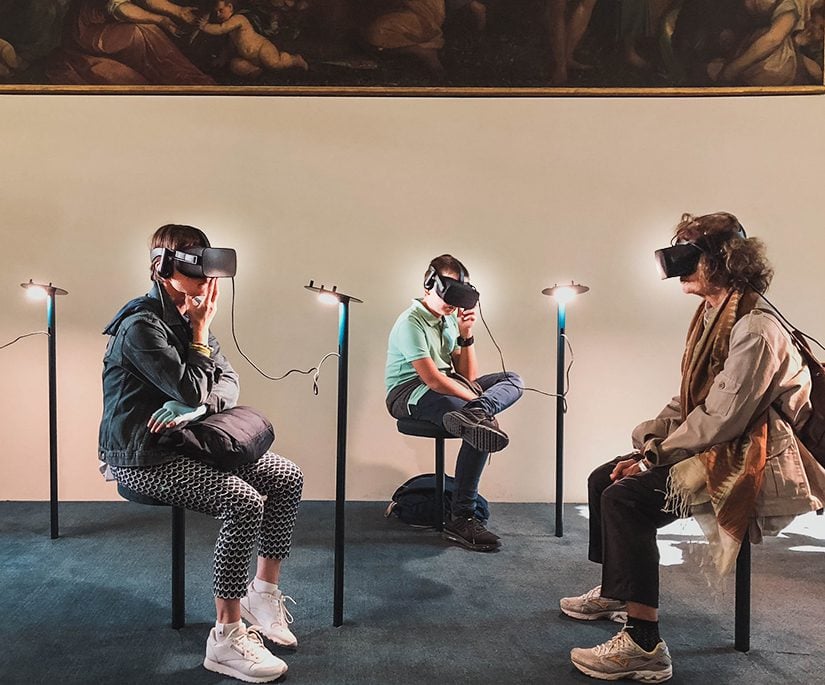Extended reality (XR) and augmented reality (AR) are disrupting education. XR tech immerses students into a virtual environment. Therefore, imagine biology students dissecting lab specimens in their home office. AR improves a student’s environment with tech enhancements. Picture history students viewing ancient ruins on a busy, street corner on a field trip. College leaders can attract students, cut costs, compete and survive with these 6 methods.
1.) College Leaders Can Apply for AR and XR Funding
Still, these XR programs are expensive. The cost of software and equipment is a hefty initial investment. Also, leaders face competing priorities with limited resources. Grants are available to fund these initiatives. Leaders can urge collaboration between departments to build these extended reality courses. Also, these cross-departmental collaborations can extend to businesses in the community. Thus, schools can sell XR courses to businesses. The investment pays off. Flagship AR courses attract new students.
2.) Connect to Y and Z Students With Extended Reality and Augmented Reality
So, incoming first-year students are digital natives. They expect tech in the classroom. Besides that, this group expects tech to play a significant role in their education. Also, this group plays XR / AR video games. They demand hyflex courses that let them thrive in and out of the classroom. Still, pandemic-driven remote instruction offered hard-learned lessons to schools and students. Extended reality courses must use pedagogy. Southern New Hampshire University (SNHU) teaches valuable lessons with its study on VR classrooms. SNHU used pedagogy and collaboration to understand how XR tech can be successful.
3.) Use Pedagogy to Create Engaging Courses
Most importantly, student feedback is part of the successful XR course design. A student-centered course design works. When students take ownership of their learning path, colleges excel. Leaders can invest in innovative strategies that push the institution toward its vision. Besides that, schools enjoy the benefits of extended reality courses in a myriad of ways. First, the courses attract top talent. Second, departments collaborate to create content. For instance, IT and AV departments could partner to make content for life sciences.
4.) Use AR and XR to Collaborate with College Departments and Businesses
Extended reality provides work experience to students. Leaders can urge students to work with business clients to create XR content. So, the tools of AR make learning fun. Besides that, the immersive XR experience lets students fail in safe environments. XR learners transfer skills to new situations better than students in traditional learning. Moreover, businesses continue to experience a learning drought. College leaders can partner with a business to create relevant training programs. These programs can meet the needs of businesses in their communities.
5.) Design Virtual Classrooms (and Leave Zoom Fatigue Behind)
Still, the pandemic spurred worry about remote learning. Zoom video conferencing platforms were not designed to be a virtual classroom. XR classrooms do not create learning fatigue. Instead, XR classrooms are engaging and exciting. So, college leaders keep the benefits of remote learning with XR. Remote learning attracts nontraditional students. Students stay engaged. They do not have to worry about time commitments and commutes to attend on-campus classes. Also, XR uses proven online tools that give students a sense of campus community.
6.) Utilize Extended Reality to Tackle Difficult Topics and Situations
Still, extended reality lets colleges lead difficult discussions. XR brings students face-to-face with topics like sexism and racism. Extended reality courses show students experience the nuances of these types of interactions. Also, universities can offer XR courses to business partners. Universities can look to industry leaders like the Air Force. They train for difficult topics such as harassment and sexual assault using XR tools. Likewise, soft skills training is finding new life in extended reality programs. Roleplays and scenarios are easy to convert from scripts to AR. Extended reality role play is more predictive than a section quiz.
In sum, extended reality is disrupting education. A college leader has an opportunity to drive the vision of the university, using XR. Also, extended reality and augmented reality give college leaders advantages. XR attracts top talent. Besides that, after initial investments, college leaders will continue to see benefits. The upfront investment of XR tools pays back. Also, AR lets students gain skills for the workplace. Therefore, colleges can offer businesses new services that address their learning drought needs.




